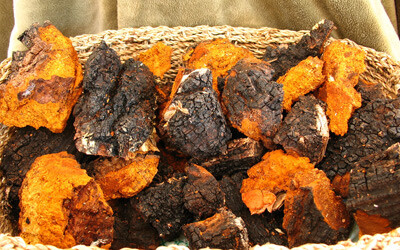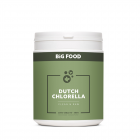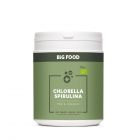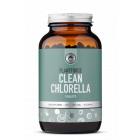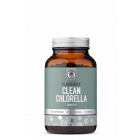About Chlorella: Benefits, Uses & Risks and Side effects
- By Bea Recuerdo (BSc)
- 7 Mar 2022
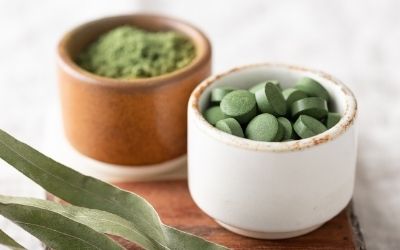

Chlorella has been one of the most talked-about dietary supplements in Europe, and it is estimated that around 10 million people worldwide consume Chlorella (Source: Liebertpub). But still, it continues to puzzle many people about what Chlorella is and what it does to the body. Luckily, in this article, we'll share with you all you need to know about Chlorella.
What is Chlorella?
Chlorella is a green freshwater alga with a single cell that belongs to the Chlorellaceae family. Chlorella is one of the oldest lifeforms on earth and is one of the lifeforms that has learned to adapt to survive in harsh environments. This green freshwater alga dates to 2.5 billion years ago and is considered a "survival champion" (Source: Pura Chlorella).
Chlorella as the “survival champion”
Chlorella is a mixotrophic organism that can get diverse energy sources instead of having one head. Chlorella first gets its food through an autotrophic process, which generates its energy in sugar. Chlorella is mostly autotrophic and can survive independently, but they are also heterotrophic, meaning it can stay by depending on other organisms like certain types of fungi, animals, and organisms. These unique abilities allow the Chlorella to survive in different environments, even low light or harsh ones (Source: Algae Research Supply).

Chlorella Vulgaris vs. Chlorella Pyrenoidosa
There are more than 20 different chlorella species under the Chlorellaceae family. Each has similarities and differences but is studied for other uses. Chlorella species, Chlorella Vulgaris and Chlorella pyrenoidosa, are two of the most used and researched species of Chlorella. Let's get to know them better (Source: Algae Research Supply).
Chlorella Vulgaris
In the 1970s, Chlorella Vulgaris grew popular as researchers used it as a source of alternative energy. At an estimate, it has a 42% lipid content which is considered higher than other biofuel sources such as sugarcane and soybeans. Using Chlorella Vulgaris as a biofuel source helped reduce the cost of oil. It was also regarded as efficient and sustainable, as it was easy and fast to grow (Source: Algae Research Supply).
Chlorella Vulgaris did not only have a high lipid content, but it also had a high protein content. Because of this, researchers in the United States during the World War studied Chlorella to increase food stocks. It was estimated that a 1,000-acre farm with 20 workers could generate 10,000 tons of protein per year. Chlorella, during this time, was seen as an additive for food products and was a possible way to reduce beef production (Source: Algae Research Supply).
Chlorella pyrenoidosa
But Chlorella Vulgaris was not the only one in the limelight during those years; Chlorella pyrenoidosa also came into view. Studies suggest that its difference to Chlorella Vulgaris is that Chlorella pyrenoidosa has the "obvious" presence of pyrenoid in its chloroplast (Source: Algae Research Supply). According to research, some preferred Chlorella pyrenoidosa when it comes to supplementation. It seemed to be more efficient and contains a higher concentration of Vitamin B12, choline, and amino acid, which also means a higher protein content. Studies also suggest a higher concentration of Chlorella Growth Factor (GCF) (Source: Pura Chlorella). Chlorella supplements, specifically one's sources from Chlorella pyrenoidosa are being studied as a Vitamin B12 source for vegans.

The benefits of using chlorella as a supplement
Chlorella is a superfood
Chlorella is deemed almost perfect because of its high nutrient density. Chlorella contains several nutrients, including Vitamin C, beta-carotene (provitamin A), B1, B2, B6, B12, niacin, pantothenic acid, folic acid, biotin, choline, inositol, PABA, vitamin E, and vitamin. Minerals, too, such as Phosphorus, potassium, magnesium, sulfur, iron, calcium, manganese, copper, zinc, iodine, and cobalt. It also contains lipoic acid, a crucial microbial growth agent (Source: Pura Chlorella).
Chlorella's rich nutrient content is the reason why it's called a "superfood" by many. You can read more about Chlorella as a superfood here.
Chlorella Health Benefits in a nutshell
It's incredible that Chlorella is also known as an “amazing microalga”, because of its many uses and benefits to the body. Mainly it is well-known and widely used as a dietary supplement (Source: Pharma Journal).
The use of Chlorella as a supplement started in Asia, particularly Japan, where it was known to be a popular food supplement. Chlorella manufacturing began in the 1950s. Chlorella pyrenoidosa and Chlorella Vulgaris are the types of Chlorella species widely utilized for supplement production (Source: Liebertpub).
Chlorella and its special properties
According to studies, it has demonstrated anti-inflammatory, antioxidant, and antibacterial properties. It has also been seen to improve wound healing, help lower blood sugar levels and help reduce blood pressure and the risk of developing heart problems. Not only that, but one of the antioxidants that Chlorella produces is lutein. It is known to help reduce the risk of developing eye problems such as macular degeneration and cataracts (Source: Pharma Journal).
In addition, Chlorella is studied for its growth stimulator, also known as Chlorella Growth Factor (CGF). CGF is one of the most used nutrient components of Chlorella when it to daily dietary supplements for children (Source: Pura Chlorella).

Chlorella is known to help improve digestion
This is possible as Chlorella helps promote peristalsis or the muscular contraction that helps move the food waste out of our body in the form of bowels. It's also interesting that Chlorella helps stimulate the growth of beneficial bacteria in the body, which helps prevent constipation and promote a healthy gut microbiome (Source: Pura Chlorella).
Chlorella helps stimulate the immune system
This superfood can also improve our body's immune function through its number of antioxidants, vitamins, and minerals. In animal experiments and clinical trials, Chlorella has been observed to stimulate the immune system, which helps fight off free radicals and foreign bodies (Source: Pura Chlorella).
Chlorella and its Chlorophyll content
Once you see Chlorella, you'll know that it's green in color, and the reason for its color – similar to other green plants is its chlorophyll content. Naturally, Chlorella contains a high level of Chlorophyll and four times more than Spirulina. The chlorophyll content in Chlorella is a significant factor in why it has such positive effects on the body (Source: Pura Chlorella).
According to studies, Chlorophyll can:
- Potentially help regulate menstruation heal damaged tissues, ulcers, sores, and hemorrhoids.
- Potentially help increase red blood cell production since the structure of Chlorophyll resembles Hemin, which can combine with proteins and help in this body process. (Source: PharmaJournal).
Chlorella is beneficial for Vegans too!
Chlorella is a good source of Vitamin B12. Unfortunately, it is not readily available in most vegan choices since it can mostly be found in animal products and lesser amounts in cheese and milk.
Chlorella as a protein source
Protein with all the essential amino acids that humans need for muscle growth, maintenance of muscle mass, and normal bones. (Source: Article 13) As a result, Chlorella is frequently added to vegetarian and vegan diets.
Chlorella is also a source of protein where it contains amino acids that help build proteins. Chlorella has been examined as a potential alternative protein source. (Source: Bioresources). This algal superfood is regarded as a complete protein because it includes all 11 necessary amino acids, including leucine (Source: NCBI), that we cannot produce ourselves (Source: NCBI).

Different uses for Chlorella
Chlorella as a way to improve the nutritional value
Its health benefits are also why the food industry tries to use it as an additive, and an example of this is Chlorella vulgaris enriched spaghetti. This was done to improve the nutritional value of pasta as compared to regular semolina-based pasta. The cooking time and texture of the pasta were not altered by this process, which is why some prefer this innovative and healthier pasta choice (Source: Pharma Journal).
Chlorella in the skincare industry
Interestingly, Chlorella is also being used in cosmetics. One skin brand uses Chlorella Vulgaris to increase collagen synthesis in the skin and help reduce wrinkles. Chlorella has carotenoid pigments such as astaxanthin, which makes it preferred by cosmetologists since this will help maintain normal skin health (Source: Pharma Journal).
Chlorella in animal nutrition
Not only do humans benefit from Chlorella, but animals too! In animal nutrition, it is approximated that 30% of algae generated worldwide is being used in animal feeds. According to Grigova (2006), the addition of 2% -10% chlorella to the diet of hens (egg-laying chickens) can help increase the total cholesterol content in egg yolks (Source: Pharma Journal).
In addition, Chlorella is also added to fish feed because of its linoleic and palmitic acid content. It was researched that adding Chlorella in the feeds of Gibel carp (Carassius auratus gibelio) can increase the fish's growth performance and physiological development, including lower blood cholesterol and increased digestive enzymes, immune function, and metabolism (Source: Pharma Journal).
Where can I buy Chlorella Supplements?
The plant is one of the stores that offer high-quality Chlorella supplements. Plantforce and Big Food Chlorella are two of our home-grown products and use Chlorella pyrenoidosa as raw material and is grown in the Netherlands. We're proud to say that our Dutch Chlorella is free from any contaminants, chemicals, and dust as it is produced in a clean and controlled environment.
We also reduce the environmental impact because no agricultural land is used when our Chlorella is grown.
Interested to know more about how our Dutch Chlorella is made? Check our blog here, and you can also learn more about our Big Food Chlorella by clicking here.



